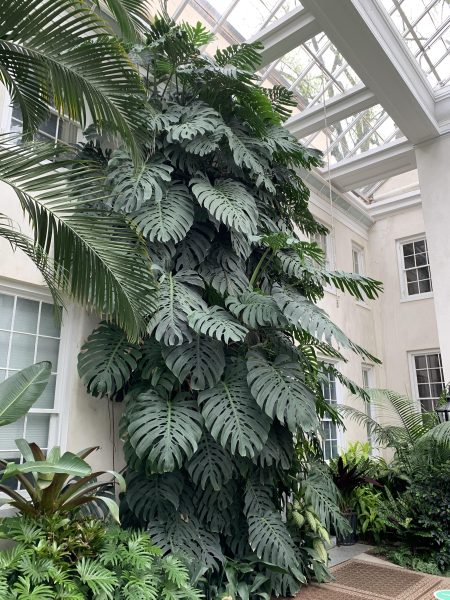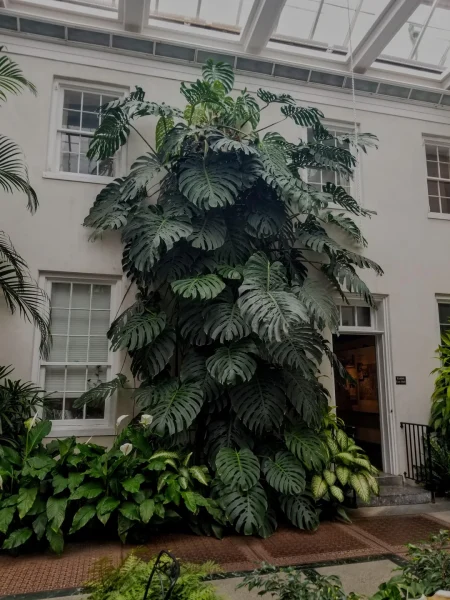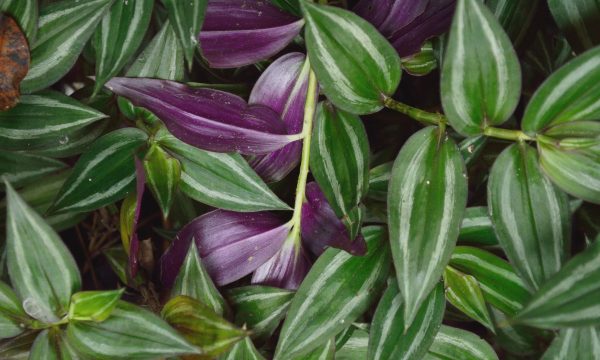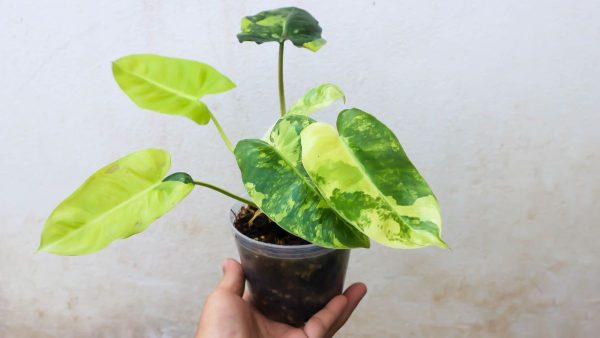In our living rooms, the Monstera delicately unfurls its leaves, standing as a silent testament to nature’s unfaltering resilience, outliving many a houseplant with a grace that belies its age.
To most houseplant lovers, the idea of a Monstera living for more than fifty years would seem a fantasy, yet the truth surpasses even the wildest plant lover’s dreams.


Imagine a Monstera so ancient, that it’s witnessed generations pass—an epitome of natural endurance, flourishing for over a century.
This isn’t a scene from a botanical fairy tale but a real-life marvel nestled within the walls of the Peirce-du Pont House at Longwood Gardens in Kennett Square, Pennsylvania.
This Monstera isn’t merely a plant; it’s a piece of living history.
The Centenarian Monstera
Residing within the storied confines of the Peirce-du Pont House, a fascinating tale of resilience and majesty unravels.
Originally erected in 1730 and later expanded by Pierre S. du Pont in the 1900s, the house became the shelter of a botanical spectacle—a Monstera plant that’s lived for over a hundred years.
Believed to have been nurtured and cherished by du Pont himself, this Monstera has not just survived; it has thrived, becoming a grand spectacle that captivates all who lay eyes on it.
Determining the exact age of this Monstera is a challenge; however, based on historical records and assessments of the plant’s growth, horticulturists estimate it to be over a century old, making it one of the oldest known Monstera plants in existence.

Fruiting Phenomenon
Among the most breathtaking aspects of this centenarian giant is its fruiting capability—a rarity for Monsteras grown outside of their native tropics.
This Monstera has successfully fruited multiple times, producing the unique scaled fruit characteristic of the species.
This phenomenon is a clear indicator of the optimal conditions found within the Peirce-du Pont House, which closely emulate the Monstera’s natural environment, enabling it not only to survive but to reproduce.
The Secrets Behind Its Longevity
While Monstera plants are known for their hardiness, living for decades in the right conditions, the extraordinary lifespan of Longwood Gardens’ Monstera is a marvel worth dissecting.
Several key factors contribute to its venerable age:
- Optimal Environmental Conditions: The controlled climate of its home, with stable temperatures, correct humidity levels, and indirect sunlight, mirrors the Monstera’s jungle habitat.
- Expert Care: Continuous care and attention by botanical experts ensure the plant’s needs are meticulously met—be it watering, feeding, or trimming.
- Genetic Resilience: It might also be a case of a genetic lottery, where this particular Monstera inherited traits that promote robust health and adaptability.
Creating the Ideal Environment
- Light: Ensure plenty of indirect sunlight to prevent leaf burn while promoting growth.
- Temperature: Keep the ambient temperature between 65°F to 85°F (18°C to 29°C), avoiding sudden changes or drafts.
- Humidity: Aim for high humidity levels above 60%, attainable through misting, humidifiers, or placing the pot over a water tray.
The longevity of the Centenarian Monstera at Longwood Gardens is not just a testament to the resilient beauty of Monstera plants but also an inspiration for indoor plant enthusiasts everywhere.
It shows us what’s possible when we create the right conditions and dedicate ourselves to careful, loving cultivation.

